The Version 6.1 global average lower tropospheric temperature (LT) anomaly for March, 2025 was +0.58 deg. C departure from the 1991-2020 mean, up from the February, 2025 anomaly of +0.50 deg. C.
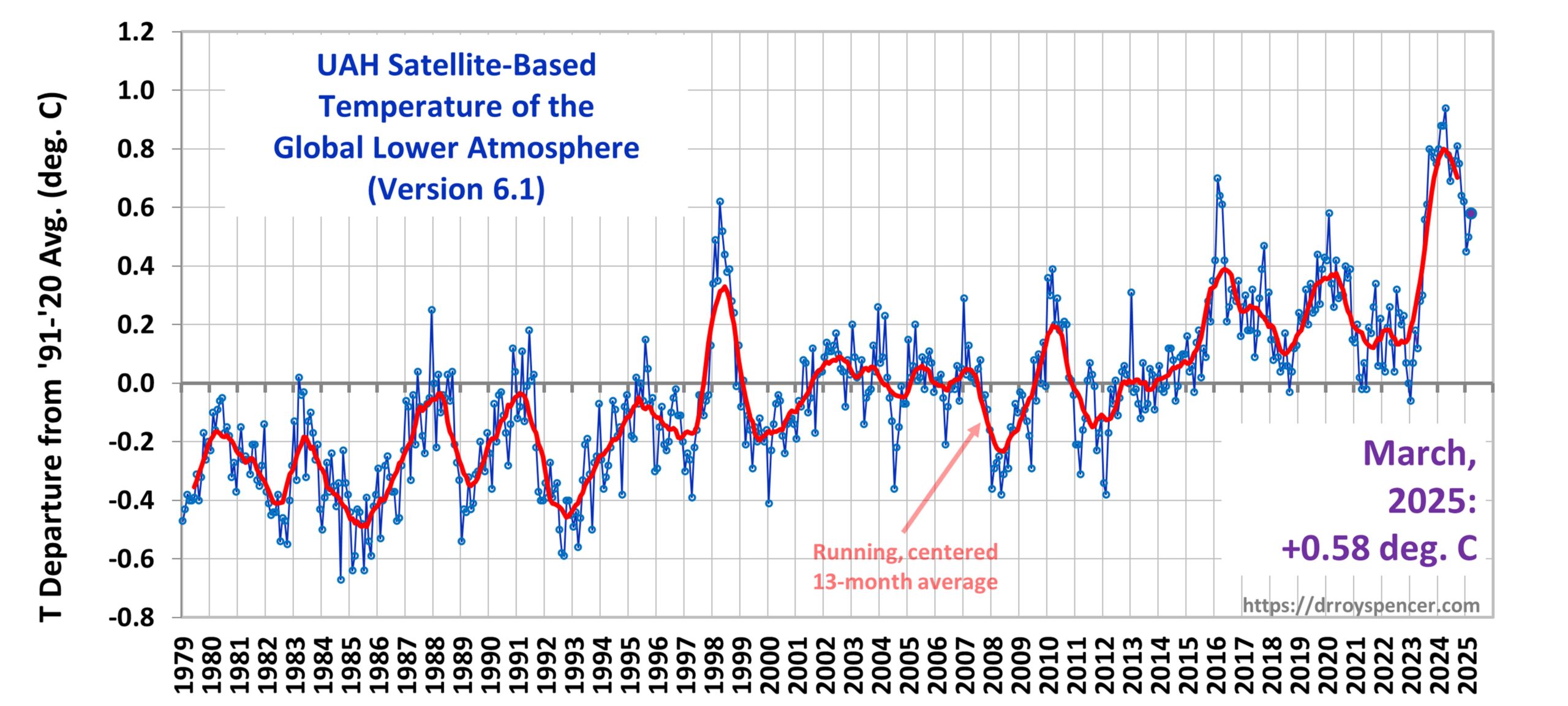
The Version 6.1 global area-averaged linear temperature trend (January 1979 through March 2025) remains at +0.15 deg/ C/decade (+0.22 C/decade over land, +0.13 C/decade over oceans).
The following table lists various regional Version 6.1 LT departures from the 30-year (1991-2020) average for the last 15 months (record highs are in red).
| YEAR | MO | GLOBE | NHEM. | SHEM. | TROPIC | USA48 | ARCTIC | AUST |
| 2024 | Jan | +0.80 | +1.02 | +0.58 | +1.20 | -0.19 | +0.40 | +1.12 |
| 2024 | Feb | +0.88 | +0.95 | +0.81 | +1.17 | +1.31 | +0.86 | +1.16 |
| 2024 | Mar | +0.88 | +0.96 | +0.80 | +1.26 | +0.22 | +1.05 | +1.34 |
| 2024 | Apr | +0.94 | +1.12 | +0.76 | +1.15 | +0.86 | +0.88 | +0.54 |
| 2024 | May | +0.78 | +0.77 | +0.78 | +1.20 | +0.05 | +0.20 | +0.53 |
| 2024 | June | +0.69 | +0.78 | +0.60 | +0.85 | +1.37 | +0.64 | +0.91 |
| 2024 | July | +0.74 | +0.86 | +0.61 | +0.97 | +0.44 | +0.56 | -0.07 |
| 2024 | Aug | +0.76 | +0.82 | +0.69 | +0.74 | +0.40 | +0.88 | +1.75 |
| 2024 | Sep | +0.81 | +1.04 | +0.58 | +0.82 | +1.31 | +1.48 | +0.98 |
| 2024 | Oct | +0.75 | +0.89 | +0.60 | +0.63 | +1.90 | +0.81 | +1.09 |
| 2024 | Nov | +0.64 | +0.87 | +0.41 | +0.53 | +1.12 | +0.79 | +1.00 |
| 2024 | Dec | +0.62 | +0.76 | +0.48 | +0.52 | +1.42 | +1.12 | +1.54 |
| 2025 | Jan | +0.45 | +0.70 | +0.21 | +0.24 | -1.06 | +0.74 | +0.48 |
| 2025 | Feb | +0.50 | +0.55 | +0.45 | +0.26 | +1.04 | +2.10 | +0.87 |
| 2025 | Mar | +0.58 | +0.74 | +0.41 | +0.40 | +1.25 | +1.23 | +1.20 |
The full UAH Global Temperature Report, along with the LT global gridpoint anomaly image for March, 2025, and a more detailed analysis by John Christy, should be available within the next several days here.
The monthly anomalies for various regions for the four deep layers we monitor from satellites will be available in the next several days at the following locations:

 Home/Blog
Home/Blog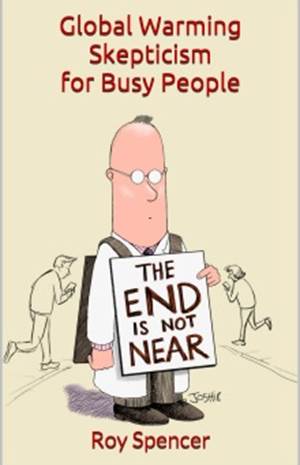
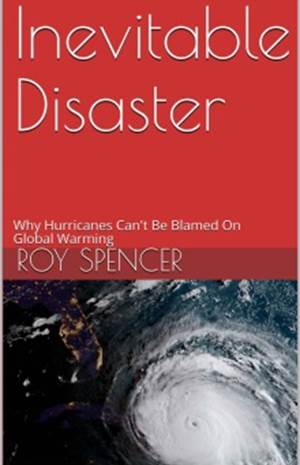
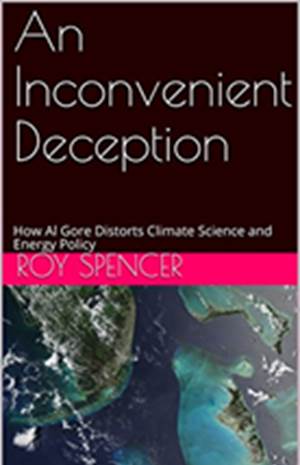
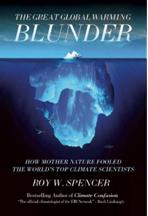

In before the pointless bickering starts. La Nia conditions are present but expected to move to ENSO-neutral this month, and odds are it will remain so through the summer, so it’s gonna be an interesting future. Hopefully the work presented here will not be defunded any time soon.
Indeed, I am also following this with great interest. It is also apparent that the forecast of ENSO seems rather difficult given the diverging results of the models.
It is difficult. At 3 months out it’s around 80% – close to the success rate of weather predictions over the coming week – with lower odds the further out, just over 50% at 12 months out (from memory).
There is the ‘Spring Predictability Barrier’ which makes for weak forecasts that predict beyond the next Spring.
The 13 mo average line sustaining a 0.4C or greater increase over the 2015-2017 path of the line.
So what is your prediction for the next few months?
The near near term is that the T will continue at its present level, given that we are in ENSO neutral conditions.
After that is mostly dependent on what ENSO does next.
What gives you the idea that I should be able to predict the future of ENSO better than any actual expert?
Warmer than I expected, and still little sign of temperatures returning to pre 2023 levels.
The 3rd warmest March on record. Close to March 2016.
2024 0.88
2016 0.64
2025 0.58
2010 0.39
1998 0.35
2020 0.34
2004 0.23
2019 0.22
2022 0.19
2017 0.18
2023 0.18
And 0.4 above the March of the ENSO similar year 2017.
So what is your prediction for the next few months?
You have to know what is causing it before you can create a predictive model. Nate has discovered another hole in his GHE theory.
My simple forecast based on linear regression from the first three months a linear trend over time, predicts 2025 will be 0.45 +/- 0.17C. That gives a 60% chance of being the second warmest year on record, but with a reasonable chance it could drop down a few places.
https://i.imgur.com/TH1RPKO.png
However, given the unusual nature of temperatures recently, I won;t be putting money on it.
Good to see the gridded data is already available. Here’s my global map in the style of the official UAH map.
https://i.imgur.com/6otGxmk.png
and the same but using a gradient fill.
https://i.imgur.com/EsUUvyB.png
Even with AGW the record temps of the last 2 years won’t be beaten for a while, perhaps more than a decade. Stay tuned for the next new pause!
So you’re saying CO2 is going to stop rising?
if you mean on the UAH troposphere record, perhaps. Looking at surface temperatures, highly unlikely it would go that long. Longest since 1981 was 6 yeas without a record.
The Tunga Eruption effects is still going strong which is why it hasn’t cooled down much.
The Tonga eruption resulted in short term cooling.
Schoeberl et al. examined how Hungas eruption affected climate in the Southern Hemisphere over the following 2 years. They found that in the year following the eruption, the cooling effect from the volcanic aerosols reflecting sunlight into outer space was stronger than the warming caused by water vapors trapping heat in the atmosphere. But most of the volcanos effects had dissipated by the end of 2023.
So youre citing a paper that predicts cooling to explain the largest warming spike in satellite historyone thats also the most inconsistent with ocean trends, which usually forecast with the troposphereand youre serious? Im struggling to follow the logic here. It seems the only valid interpretation is academia said it, so it must be true. Can you explain why that explanation holds up better than simply admitting the modelbuilt for the first wet volcano of its kindmight be wrong? Either the aerosol forcing estimate or the warming from stratospheric water vapor must be off, right? Otherwise, its like saying, My model says Pinatubo caused warming, so the observed cooling must have come from something else. Is that really what were calling objective reality now?
Cooling in the Stratosphere yes but not in the Troposphere.
When the Stratosphere cools down the Troposphere warms, and vice versa.
A warming troposphere does not necessarily correspond to a cooling stratosphere.
Factors that would cause the troposphere to warm without the corresponding cooling of stratosphere would include an increase in TSI flux or an increase in geothermal flux. There may be other factors as well. These are just examples.
Factors that would cause the troposphere to warm AND the stratosphere to cool would include an increase in GHGs or a decrease in some aerosols. There may be other factors as well. These are just examples.
Agreed tommy. Even though the HTE is slowing dissipating, it is still having a warming effect.
https://postimg.cc/06yBjXsz
There were no appreciable warming effects from the Tunga eruption.
It hasn’t cooled down because TSI is still very high in 2025.
https://i.postimg.cc/3rjGy8zG/CERES-TSI-Composite-Feb-25.jpg
Many people like to think they’ve falsified solar activity forcing.
Even if those values were correct, they still would not account for all the temperature increase since the H-T eruption.
Then, there’s the clear correlation with UAH, which doesn’t exist with the solar “constant”.
So no, the insignificant variation in TSI didn’t do it.
“… the insignificant variation in TSI didn’t do it.”
Clint your comment doesn’t even count as a valid argument.
Let’s see how significant the SC#25 TSI really was – in February, the 63rd month of this solar cycle, the sun had emitted 26.3 W/m^2 more than the last solar cycle #24 in 5.25 years, or 5.0 W/m^2/yr
This result is then divided by the canonical 4 to get 1.25 W/m^2/yr in average solar climate forcing over each of the last 5.25 years.
Additionally, the last 9 solar cycles TSI has imparted an alternating pattern in the eastern Pacific Nino regions that affects albedo particularly during/after the solar minimum until the next El Nino.
https://i.postimg.cc/7hvjBJz5/Solar-Cycles-and-Tropical-Step-Changes.png
The combination of lower albedo and higher TSI, as computed using the S-B equation, was more than enough to supply the absorbed solar. I estimated the direct TSI contribution to the ASR to be 36%, but it was TSI that set the table, changing the albedo, so it was all TSI.
https://i.postimg.cc/4NFFbVW9/ASR-and-Had-SST4.png
Just let me know Clint when you have determined the climate forcing for HTHH or any other forcing you can dream up to compete with TSI.
BW said: Lets see how significant the SC#25 TSI really was in February, the 63rd month of this solar cycle, the sun had emitted 26.3 W/m^2 more than the last solar cycle #24 in 5.25 years, or 5.0 W/m^2/yr.
That is patently false.
The average TSI over 63 months starting from the beginning of SC25 from 2019/12 to 2025/02 is 1362.24 W.m-2.
The average TSI over 63 months starting from the beginning of SC24 from 2008/01 to 2013/03 is 1361.73 W.m-2.
That is a difference of 1362.24 – 1361.73 = 0.51 W.m-2. That isn’t even remotely close to your claimed 26.3 W.m-2.
BW said: This result is then divided by the canonical 4 to get 1.25 W/m^2/yr in average solar climate forcing over each of the last 5.25 years.
Again, this is patently false.
The actual radiative force is 0.51 W.m-2 * (1 – 0.3) / 4 = 0.09 W.m-2. That isn’t even remotely close to your claimed 1.25 W.m-2.
This data comes from the LASP Interactive Solar Irradiance Datacenter.
Its difficult to believe that these natural variations in temperature that we see across the entire chart above are chaotic. There may be a chaotic element to them but it is clear that we recently had an astronomical event that resulted in about 5 extra days close to the sun vs further way from the sun over how much we had in 1980 as verified by the US Naval Observatory.
We can also clearly see via spectral analysis of outgoing longwave radiation that frequencies in CO2 bands are far more saturated than in the water vapor bands, such that water vapor feedbacks would be very robust for any increase in total sunlight observed on earth. I figure the reason for this in view of how much water vapor is in the air compared to CO2 is that water vapor is not evenly distributed and that shows up with less blockage of LW in the water vapor frequencies when only mean global outgoing LW is estimated. All that is pretty uncertain especially as we consider clouds and precipitable water in the atmosphere.
With three known variables for sunlight 1) orbit perturbances of speed changes of earth through its orbit as confirmed by the US Naval Observatory. 2) year over year changes in earth’s orbit ellipticity brought about by the same. 3) solar activity that affects the amount of high frequency radiation received by earth.
That and planet movement tables strongly suggests that the decline in the effect is going to continue to move slowly over the next year and a half or more.
Sea ice feedback appears to be kicking in about two years after this anomalous event kicked in so we should expect this will tend to slow the declining effects of Jupiter moving into what is likely several years of strong cooling influence beginning this summer.
But the best we can expect of it is a neutralization of the warming effects of the other planets over the next few years. We have seen recently that it can take a long time for the ocean to cough up its heat with ocean adjustment time periods estimated to be around 10 years. Thats probably because of the GHE and atmospheric temperature is a factor along with absorbed solar radiation directly into the ocean as opposed to only on its surface.
The recent update to solar activity now recognized here https://www.swpc.noaa.gov/products/solar-cycle-progression
that the 2019 predictions were quite low. You can see by how much by selecting the 2019 prediction in the small drop down box in the lower left of the graph.
The current prediction doesn’t have solar activity dropping below the long term average until around late summer 2027 and not reaching a minimum until 2031
We can expect a small warming bump after that with Jupiter moving back to the warming side by 2032. But Jupiter will not catch Saturn again until 2040 when they will combine their effects on the cool side which hasn’t happened since 1980.
As a caution against those who wish to dispute this, all the above is operating from an assumed non-warming influence (detrended to zero) estimation of the effects of increasing CO2.
That certainly doesn’t have to be the case and I am not predicting that to be the case.
Instead I am simply operating from a position of uncertainty about the effects of increasing CO2 and thus have not attempted to plot it. So this is not an attack on CO2 worriers and special interest warriors. The only thing I am certain of is that some of the warming experienced since 1980 is attributable to the items noted above and not part of any warming from CO2 as CO2 does not affect the sun nor earth’s speed through the warmest and coolest parts of its orbit.
The new Monckton Pause starts in 2023/06 and is 21 months. The average of this pause is 0.70 C which is 0.49 C higher than the average of the previous pause of 0.21 C which lasted 107 months starting in 2014/06.
My prediction for 2025 is 0.43 +/- 0.16 C.
Really appreciate this long-term, extensive dataset. This will be an invaluable historical record for the development of climate change. Please keep it up.
Yes, this space-based dataset nicely takes readings averaged out over a larger area than relying on one lone ground station representing a large area of varying characteristics.
This half-century of data also clearly shows there is no mystical feedback loops that will accelerate the warming. It’s been 1.5C/century for decades, in spite of ENSO, Tunga, climate policies and even the industrialization of Asia.
Second- and third-order polynomials fit the data than a linear model, suggesting that the warming is accelerating.
” … suggesting that the warming is accelerating. ”
No need to be an alarmist to understand you. It’s enough to look at the polynomials:
https://i.postimg.cc/sgytGv69/UAH-6-1-LT-Globe-lin-vs-2p-vs-3p.png
*
If there were no acceleration, the green, yellow and red lines simply would coincide.
UAH Mean and Median Global for Mar 2025
https://climatedatablog.wordpress.com/2025/04/03/uah-mean-and-median-global-for-mar-2025/
UAH Mean and Median Tropics for Mar 2025
https://climatedatablog.wordpress.com/2025/04/03/uah-mean-and-median-tropics-for-mar-2025/
The March reading seems to support the theory that there was some kind of sudden event or effect a few years ago, and that effect is now dissipating. The big question is the same as every month, and that is where does it go from here? The potential for month-to-month variability is large enough that no single month really has much significance for the future direction. The red line is still going down, so at least one peak is over.
I think future peaks and troughs will wiggle around the 0.4C above the the current baseline. 1987-1997 averaged around -.2, 2000-2015 around 0, and 2015-2023 wiggled around the 0.2C level so after this big peak finishes it’s run I think temps will settle in around the 0.4C level. I’m using the 1998 peak as model.
That’s just eyeballing a graph without consideration of the underlying physics, so no guarantees or bets.
SOLAR MINIMUM UPDATE
Billionaire businessman Mark Cuban predicted economic disaster for Alabama and other southern states if the Department of Government Efficiency continues on its trajectory of slashing federal workers and cutting spending that bleeds into the private sector.
I think there is going to be a Red Rural Recession and soon if all the cuts continue as is, Cuban posted to the Bluesky social media platform on Wednesday.
All the firings, cancelling of grants and contracts with companies, the closing of offices, disproportionately impact small towns, cities and states, Cuban continued. Their finances will be turned upside.
https://www.al.com/politics/2025/04/mark-cuban-issues-dire-prediction-amid-elon-musks-doge-cuts-red-rural-recession.html
Well done, everyone!
The monthly UAH satellite lower tropo temperatures for March 2025 are out, thank you dr Spencer, showing an increase over AUSTRALIA.
There is much discussion about whether the Hunga Tonga eruption of 15th Jan 2022 plays a part.
The following graph does not prove anything.
It is, however, suggestive that Hunga Tonga could be playing a part.
Geoff S
https://www.geoffstuff.com/htstart.jpg
The Moyhu surface temperature index showed a similar small rise of 0.04C. It was the second warmest March in the record, after 2024.
https://moyhu.blogspot.com/2025/04/march-global-surface-templs-up-004-from.html
Everybody still feeling good about cost of living, the economy, etc?
Anybody feeling any buyers remorse yet?